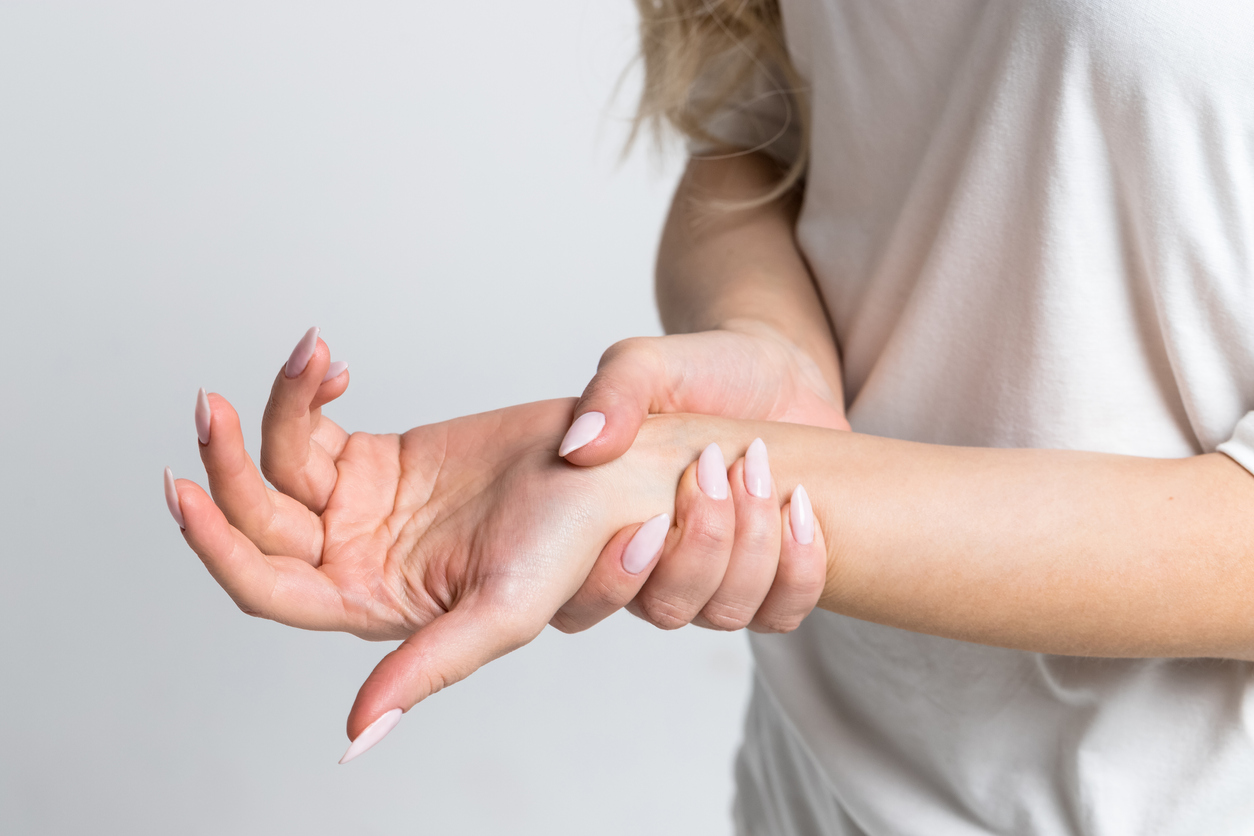
You've got that numbness and tingling in your thumb again. This time around, it's also in your index and middle finger. You keep dropping things, like your keys and glasses. And the symptoms are worse at night, often waking you up with the feeling that you need to shake your hand and get the blood flowing back into it. What's going on?
Three words: Carpal tunnel syndrome (CTS), says Joseph Legato, MD, an orthopedist at Summit Health who specializes in hand and wrist disorders. Also known as median nerve compression, CTS is extremely common affecting between 3 to 6 percent of adults in the U.S. The condition causes tingling, weakness, and sometimes numbness in the hand and fingers.
Dr. Legato advises that people experiencing symptoms of CTS take them seriously. “If you don't seek treatment, you could begin to see permanent muscle loss,” he warns. “While I can help correct CTS, I can't help you get back lost muscle.”
What is carpal tunnel syndrome?
CTS is a disorder characterized by a group of symptoms. Dr. Legato says these symptoms are generally caused by compression of the median nerve in the wrist.
Other nerves from the neck might be involved as well. “It's not uncommon to have contributions of nerve compression from two spots,” says Dr. Legato. “This is known as double crush phenomenon, and it's more common than people think.”
Symptoms of carpal tunnel syndrome
If you have symptoms Dr. Legato advises scheduling an appointment with a hand surgeon. Be on the look out for:
- Numbness and tingling in the thumb and parts of fingers
- Hand weakness
- Dropping items
- Muscle atrophy or reduced muscle mass
- Loss of sensation to hot or cold temperatures
These symptoms also tend to worsen at night. While pain and swelling are less common symptoms, they may be present at times in certain individuals.
Other disorders that mimic CTS have similar symptoms. For example, numbness and hand weakness, can be related to neuropathy — damage to the peripheral nervous system — from diabetes or de Quervain's tenosynovitis, which is inflammation of the tendons and synovium (the sheath that covers the tendons). Your diagnosis affects the type of treatment you receive, so it's important to receive the correct one.
How carpal tunnel syndrome is diagnosed
When someone comes in with a suspected case of CTS, Dr. Legato begins with a physical exam. He tests each finger for sensation and looks at the muscles where the hand meets the wrist for strength and muscle atrophy. Dr. Legato will also tap the median nerve. If this results in numbness and tingling, then that may indicate CTS.
To rule out diseases like arthritis and diabetes, Dr. Legato may order blood tests, X-rays, ultrasounds, and an electromyography (EMG), which tests the activity of the nerves. These tests also help him determine both the severity and the source of the symptoms.
Who develops carpal tunnel syndrome?
Activities that might irritate or lead to CTS are the “regular use of vibration tools,” explains Dr. Legato, “or anything that requires repetitive flexion of the wrist with hard gripping of the hand.” This includes people who work in manufacturing, construction, cleaning, tailoring, meat-packing, and other jobs that require heavy physical labor.
Genetic and biological factors play a role. So do age and smoking. “As you age it’s easier for the nerves to get more compressed, and smoking might inflame the synovium,” he adds, “although the etiology is not fully understood. We just know that they're risk factors.”
What's not on the list? To most people's surprise, the answer is: typing. Evidence doesn't consistently show that keyboard work causes CTS, admits Dr. Legato. It may, however, worsen symptoms if you have existing compression of the nerve. Regardless, if you are experiencing symptoms, he recommends you have it evaluated.
Treatments for carpal tunnel syndrome
Dr. Legato always considers non-operative treatments first. “My initial go-to is night splinting,” he says. “I also advise activity modification: Avoid the things that aggravate it. Take breaks. And wear the splint during the day if you need to.”
Physical therapy, he notes, is not common. Though some advocates believe that yoga and acupuncture help as well. “A steroid injection may be the next step to help relieve CTS symptoms, and it may also serve a diagnostic role,” he adds.
Surgical solutions
If symptoms worsen or you start to notice atrophy or loss of hot and cold sensations, then Dr. Legato may suggest surgery. CTS operations are the second most common type of musculoskeletal surgery, with more than 230,000 procedures performed annually.
There are two kinds of procedures — the traditional open release incision and the less invasive, camera-guided endoscopic surgery.
Both offer what Dr. Legato calls “good patient outcomes.” Neither surgery requires the risk of going under general anesthesia or an overnight hospital stay.
Some evidence shows faster recovery with the camera-guided option, he explains. But both techniques have been shown to have similar outcomes over the long-term. “Everybody is different,” adds Dr. Legato. “It comes down to personal choice.”
Overall, whether it's non-operative or operative, CTS treatment “has a pretty high patient satisfaction," he says. "If you feel symptoms, have them checked out. Don't wait on it.”
